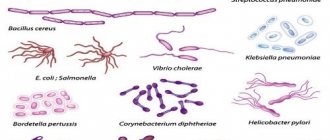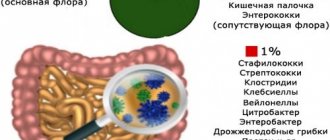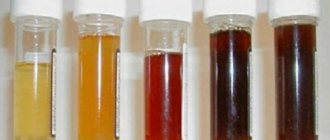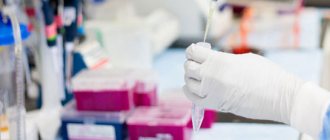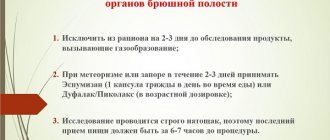Last updated - January 29, 2020 at 6:57 pm
Reading time: 4 min
Many times people wonder how much feces they need, how to collect and store it correctly if they receive a referral from the clinic.
Stool analysis is an important study of fecal matter, it allows us to identify diseases of the gastrointestinal tract and the presence of parasites. Formed during food processing.
The final formation of feces occurs after passing through the entire digestive system. From here, complete, reliable data about the processes inside the body is formed. Materials must be submitted at least once a year for both adults and children.
Everyone, including children, even newborns, must be tested for eggs of worms and other parasites. In addition, a stool analysis will make it possible to diagnose the liver and pancreas, if there are no symptoms. The attending physician, who will issue a referral, can help answer the question of how much stool is needed for analysis.
For what purposes is stool analysis used?
Feces are the end product of food digestion. Feces are formed as food passes through the entire digestive tract and therefore contains information about the functioning of all digestive organs.
Feces normally contain a very large number of bacteria (more than 2/3 of the weight of feces), tiny undigested food debris, mucus, as well as some pigments (dyes) that give it a characteristic color and a small number of cells lining the intestines.
Stool analysis in an adult. In case of diseases of the digestive system, stool analysis usually reveals deviations from the norm, indicating a disorder at one or another stage of the digestive process.
Using a coprogram, the doctor identifies some diseases of the stomach, intestines, pancreas, liver, and gall bladder.
How to prepare for the test?
Defecation is a specific process. The intestines are not always emptied on time. In this case, storing stool for testing is considered a pressing issue for many people. Delivery tank. culture analysis is especially difficult at times of constipation, which happens in the case of infection with helminthic infestations.
Irregular bowel movements suggest storing stool in the refrigerator, but each type of analysis has its own standards.
The preparatory process is:
- in reviewing your diet;
- excluding foods that cause stomach upset (beets, cabbage, pickled and pickled cucumbers, sweet and flour baked goods);
- excluding taking laxatives, antibiotics, vitamins and potent drugs 3-4 days before the test.
Delayed bowel movements lead to bloating and heartburn. It is not always possible to give patients a stool test on time.
What diseases can be detected using stool analysis?
Deciphering a stool test helps the doctor identify certain diseases of the digestive system. A change in one or another parameter taken into account in stool analysis indicates the presence of a disease.
Cholelithiasis
Gallstones: This is a disease in which stones form in the gallbladder, obstructing the flow of bile into the intestines. When the outflow of bile from the gallbladder is impaired, obstructive jaundice develops.
The appearance of discolored feces with obstructive jaundice is usually preceded by hepatic colic - a sudden attack of acute pain in the right hypochondrium, radiating to the right arm.
With such jaundice, feces lose color and acquire a whitish color (the color of clay), since they do not contain a special pigment, stercobilin, which gives feces a brown color. Other symptoms of cholelithiasis are: periodic discomfort in the right hypochondrium, nausea, bitter belching, increased body temperature to 37°C, etc.
Stomach or duodenal ulcer
Gastric or duodenal ulcer complicated by bleeding. In some cases, with an untreated peptic ulcer of the stomach or duodenum, a blood vessel ruptures at the bottom of the ulcer and bleeding develops.
In such cases, feces acquire a black color and a tarry consistency and are called melena. The appearance of melena in people with peptic ulcer disease is usually accompanied by a decrease in pain in the epigastric region, but this does not indicate an improvement in the condition.
Bleeding from a peptic ulcer is a dangerous complication and requires emergency medical attention. Very often, the ulcer may not bleed very much and therefore the patient does not notice any signs of bleeding, but traces of blood are detected in the stool.
Varicose veins of the esophagus
Esophageal varices, which occur in people with cirrhosis of the liver, can also be complicated by bleeding.
If blood from the veins of the esophagus enters the stomach, melena also appears - black, tarry stool.
Ulcerative colitis, hemorrhoids, anal fissures, dysentery cause the appearance of fresh blood in the stool, visible to the naked eye. As a rule, with these diseases, defecation is accompanied by pain.
Dishes for collecting feces
Before you begin submitting biomaterial for laboratory examination, you also need some preparation.
Today you can purchase sterile containers for donating stool at any pharmacy. Special containers are characterized as sterile containers; they can be glass or plastic.
Before submitting the biomaterial to the laboratory, it is recommended to store it in a tightly closed container at a temperature not exceeding +5 degrees. If the room is hot, then the biomaterial must be stored in a cool place, since there is a possibility that active processes of fermentation and proliferation of putrefactive bacteria will begin in the biomaterial.
The container is sold complete with a lid and spatula. If it is not possible to purchase a container at a pharmacy, then you can store the collection in a small bottle with a lid, which must first be thoroughly rinsed and dried.
If stool is donated to determine dysbacteriosis, the collection can take place at any time of the day, so the question arises of how long the biomaterial can be stored in the refrigerator. The answer to this question is simple - no more than a day.
By following these simple rules for collecting biomaterial, you can submit a high-quality sample to the laboratory, which will reveal the cause of the disease. Many patients ask how many days does it take to diagnose a biomaterial? Experts say no more than a day.
Types of stool tests
Stool analysis for dysbacteriosis
Stool analysis for dysbacteriosis: study of human intestinal microflora. The analysis evaluates the concentration and ratio of “beneficial” (lactobacteria, bifidobacteria, E. coli), opportunistic (enterobacteria, staphylococci, clostridia, fungi) and pathogenic (shigella, salmonella) microorganisms.
Stool analysis in an adult. Due to various reasons, “useful” bacteria may disappear from the intestinal microflora and fungi of the genus Candida, staphylococci, Proteus, and Pseudomonas aeruginosa may appear.
The test is also prescribed for high-risk newborns and adolescents with frequent respiratory infections and allergic reactions.
In what cases is a stool test for dysbacteriosis prescribed: unstable stool (constipation, diarrhea); pain and discomfort in the abdomen, flatulence; intolerance to a number of foods; skin rashes; allergic reactions; intestinal infections; long-term therapy with hormones and anti-inflammatory drugs; determination of the nature of the violation of the normal intestinal biocenosis.
Coprogram (stool analysis)
Coprogram (stool analysis) study of the physical, chemical and microscopic characteristics of feces.
Stool analysis in an adult. Stool examination allows you to diagnose dysfunction of the stomach, pancreas, liver, the presence of accelerated passage of food through the stomach and intestines, malabsorption in the duodenum and small intestine; inflammatory process in the gastrointestinal tract, ulcerative, allergic, spastic colitis.
What are the indications for prescribing the test:
diagnosis of diseases of the digestive system; assessment of the results of treatment.
Analysis of stool (scraping) for enterobiasis
Fecal analysis (scraping) for enterobiasis: detection of pinworm eggs (helminths, the clinical manifestations of which are itching in the anal area and intestinal disorders).
Examination of stool for enterobiasis reveals the presence or absence of pinworm eggs.
What are the indications for testing: suspicion of infection with pinworms (Enterobius vermicularis); “Barrier” analysis (during hospitalization, issuing a medical record, a certificate for the swimming pool, etc.)
Fecal analysis for helminth eggs (worm eggs)
Analysis of adult stool for helminth eggs (worm eggs): detection of helminth eggs (worms) that cause a group of diseases called helminthiases. Most often, the disease is caused in humans by round and flatworms. Stool examination reveals helminthiasis - ascariasis, trichinosis, hookworm.
What are the indications for testing: suspicion of helminth infection; “Barrier” analysis (during hospitalization, registration of a medical record, etc.).
Fecal occult blood test
Fecal occult blood test: detects “hidden” blood that is not visible under microscopic examination. The presence of bleeding from any part of the digestive tract.
What are the indications for the test: suspicion of bleeding from any part of the gastrointestinal tract.
Preparing to collect stool for analysis
Preparing for the test is as important as the diagnosis itself. Therefore, the following recommendations have been developed:
Preparing for the test is as important as the diagnosis itself. Recommendations for taking a stool test:
- feces must be collected in the morning. Immediately before collection, be sure to carry out hygiene procedures for the genitals and anus using soap. Excretions, blood, drops of urine from the genitourinary organs should not get into the biomaterial, and fragments of feces should not be collected from the toilet - this can qualitatively affect the results;
- If stool is taken for the study of occult blood, then a few days before its collection, special preparation of the body is required, namely, to refuse to eat foods containing large quantities. A day before the test, stop taking medications so as not to provoke chemical coloring of the stool;
- if the test is intended to identify microbes and infections that provoke dysbacteriosis, then it would be advisable to adhere to a strict diet for several days. Only in this way will the coprogram be able to determine what is the main cause of dysbiosis - infection or malnutrition.
What you should definitely do when collecting stool
- thorough toileting of the external genitalia and anus with soapy water, followed by rinsing with boiled water;
- pre-urinate;
- perform defecation in a dry, clean container: a vessel or a night vase;
- transfer a stool sample of 3-5 cubic meters. cm in a pre-prepared clean, dry container for storage and transportation;
- if you plan to examine stool for the presence of hidden blood, then exclude meat, fish, green vegetables and tomatoes from the diet for 3 days, and do not brush your teeth, since damaged gums may release a sufficient amount of blood for a false positive result.
The procedure for collecting hair for microelement analysis
- Cut small tufts of hair, 3–4 cm long, from the occipital, posterior parietal and posterior temporal areas of the scalp as close to the root as possible. The thickness of the total hair bundle should be about 1 cm. If the cropped hair bundle is longer than 3–4 cm, it must be cut off, leaving for examination the part that was closer to the scalp. If the cut hair is short, you need to collect it in a volume equal to one teaspoon.
- Place hair in a gripper bag.
- Deliver the gripper package with the sample to any Diagnostic Center of the Helix Laboratory Service, transporting at room temperature.
What not to do when collecting stool
Stool examinations should not be carried out earlier than 2 days after an enema, an X-ray examination of the stomach and intestines, or a colonoscopy.
Do not allow urine or water into the sample. Conduct stool examinations in women during menstruation. Using a matchbox as a container for feces. Use only a special container or clean, dry container.
You cannot take medications the day before, including: activated carbon; laxatives; preparations of iron, copper, bismuth; use fat-based rectal suppositories.
Protocol for obtaining a single urine sample
Procedure for using a vacuum system with a self-contained urine transfer device
- Unscrew the lid of the container with the previously collected portion of urine.
- Insert the self-contained urine transfer device (holder) into the container (Figure 10). If urine remains in a container for a long time, it is necessary to mix it using a holder.
- Insert the test tube into the holder. Press the tube so that the holder needle pierces the rubber stopper in the tube cap (Figure 11). Immediately after this, the test tube will begin to fill with urine.
- Once urine has stopped flowing into the test tube, remove the test tube from the holder (Figure 12).
- Invert the tube several times to mix the urine with the preservative (Figure 13).
- Deliver the sample in a tube during the day to any Diagnostic Center of the Helix Laboratory Service, transporting at room temperature.
Procedure for using a vacuum system with a built-in urine transfer device
- Remove the protective sticker from the lid of the container with the previously collected portion of urine, exposing the needle of the built-in urine transfer device, which is covered with a protective cap (Figure 14). If the urine has been in the container for some time, you need to stir it.
- Insert the tube into the hole of the built-in urine transfer device. Press the tube so that the needle of the built-in device pierces the rubber stopper in the tube cap (Figure 15). Immediately after this, the test tube will begin to fill with urine.
- After urine stops flowing into the test tube, remove the test tube from the built-in device.
- Invert the tube several times to mix the urine with the preservative (Figure 13).
- Deliver the sample in a test tube as soon as possible (no more than 3 hours from the end of collection) to any Diagnostic Center of the Helix Laboratory Service, transporting at room temperature.
General stool collection technique
Stool analysis in an adult. When collecting stool, you must follow the correct stool collection technique.
Stool collection technique:
- Only freshly excreted feces obtained naturally on the day of the study are suitable for research;
- Do not touch the inner surface of the container, lid and spoon with your hands, do not wash or rinse it;
- feces must be collected only using a special spoon attached to the lid of a plastic container;
- from the container (vessel), feces are collected into a container using a spoon;
- when collecting feces from small children, it is prohibited to take feces from a diaper, but it is allowed from underwear;
- the container must be filled to no more than 1/3 of its volume;
- feces should not contain urine;
- the container should not be washed or rinsed after collecting biomaterial into it;
- The container with the sample should be delivered to the laboratory within 1 day, before which it must be stored in the refrigerator (at a temperature of + 2 to + 4 °C).
Testing feces for worm eggs
This analysis is collected more often in children than in adults. Here it is important to collect the stool quickly and it is advisable to deliver it warm to the hospital for analysis (take two to three teaspoons of the material). This must be done because some worms die and may not be detected in feces during long-term storage.
Is it possible to donate evening stool during this analysis? Not advisable. It is better to prepare a jar in the evening and wait until the morning, since many worms best leave the body in the morning, and can even crawl out of a person’s anus at night. You can eat whatever you want before taking such an analysis.
Interesting video:
How to properly collect feces from a child
You will also need a clean container to collect the stool sample. You can buy it at the pharmacy, it is almost no different from a container for collecting urine, the only thing is that it has a small spoon attached to its lid.
It is not necessary to wash the child immediately before collecting this analysis; it is enough to do it as usual - in the morning and in the evening. The easiest way to collect feces is from a diaper (it doesn’t matter whether it is multi-use or disposable), the main thing is to take the contents from the surface.
The volume of collected material should be approximately 5–10 g (1–2 teaspoons).
If the baby's stool is liquid and analysis is necessary, you will have to place the child on medical oilcloth and then carefully pour the contents into a container.
How to properly collect feces for scatological analysis from a child
This analysis does not require special preparation from the patient. Before the study, it is not recommended to take medications that affect intestinal motility, iron supplements (for anemia), barium, bismuth, or various substances with coloring properties.
You cannot do enemas, take Vaseline and castor oils, or use candles on the eve of the test. There should be no foreign matter in the stool, such as urine.
Stool analysis in an adult. Quantity: under normal conditions, subject to a balanced diet, a healthy adult excretes from 100 to 200 g of feces per day, an infant - no more than 70 - 90 g. The amount of feces depends on the diet, for example, the predominance of plant foods in the diet is accompanied by an increase, and protein foods - by a decrease in the amount of feces.
Less than 100 g per day: specific for constipation of various etiologies; more than 200 g per day: with insufficient or complete absence of bile intake, impaired digestion of food in the small intestine, accelerated evacuation of intestinal contents, inflammation of the mucous membrane of the large intestine up to 1 kg or more - typical for pancreatic insufficiency.
How to properly collect feces for carbohydrates
Stool analysis in an adult. In the vast majority of cases, feces for carbohydrates are prescribed to babies of the first year of life. Feces for carbohydrates in newborns reveal the so-called lactase deficiency. In other words, to determine whether the child has an intolerance to milk and derivative products, which often happens at a young age.
The container must be delivered for subsequent stool analysis for carbohydrates during the same day. It is best to keep the container tightly closed in the refrigerator until transport.
You can collect the necessary material yourself, using a special spoon and a sterile container. 5-10 ml will be quite enough.
Indications for analyzing stool for carbohydrates may include symptoms such as unstable stools, increased gas formation accompanied by pain, and bloating. If your baby cries before going to the toilet, or immediately after, you should pay special attention to this. You may be at risk.
How to properly collect stool for rotavirus infection in a child
It is best to take a stool test at the peak of clinical manifestations of the disease (usually on days 2–3), when damage to the intestinal mucosa is most pronounced and digestion is impaired.
At the same time, identification of the above criteria is possible within 1–2 days after the onset of infection, since rotavirus quite quickly destroys the intestinal mucosa and disrupts its absorption function.
Stool analysis in an adult. Feces should be collected in a small amount (up to 5 grams) in a sterile container, which can be purchased at the pharmacy. It is important that the collected material does not come into contact with anything (be it the surface of the toilet, a children's potty, etc.), since this can introduce foreign microorganisms into it, which will distort the results of the study.
In infants, feces can be collected from the diaper with a sterile swab. The collected material must be delivered to the laboratory for research within the first 2 to 3 hours after collection. The study itself usually does not take much time, as a result of which analysis results can be obtained within a few hours.
How to properly collect stool for analysis for helminth eggs
In this stool analysis, the presence of helminth eggs, Giardia cysts, and segments of parasitic worms is checked. Normally, the result of this analysis is negative. You need to take 8-10 cm3 (~2 teaspoons) from the resulting material. Feces are collected using a special “spoon” that is built into the lid of a special container that you should be given to collect feces.
This is the most common stool test prescribed for children. It is prescribed before enrolling in a kindergarten, for a swimming pool, after a long vacation in a kindergarten, or if a child is suspected of having parasites. The result is usually ready the next day. For a kindergarten or swimming pool, analysis of goten for ten days.
What to do if you are constipated?
You cannot give any suppositories or enemas or take laxative pills on the eve of the test. Constipation due to helminthiasis is a familiar phenomenon, so you need to take care of collecting bowel movements in advance.
For constipation, you can go one of 3 ways:
- In the evening, have a light dinner by preparing the Panicle salad;
- postpone the study until the next day;
- store the analysis on the middle shelf in the refrigerator, but not in the freezer due to the destruction of biomaterial at low temperatures.
Feces cannot be stored for a long time. The recommended time is no more than 10 hours before the test. It is best to carry fresh feces taken in the morning. Taking into account the fact that the analysis is carried out within 24 hours, the patient can return to receive the results the very next day when submitting stool in the morning.
Scraping for enterobiasis
This analysis allows you to determine the presence of pinworm eggs. Scraping for enterobiasis should be carried out by everyone at least 1-2 times a year. This analysis allows you to determine the presence of pinworms in 50%, which is much more than a simple stool test for helminth eggs (10-15%). To obtain the most accurate data, you can conduct this analysis 2-3 times with a break of several days.
Pinworms and helminths are the most common types of parasites in humans. Therefore, this analysis is the most common, and is required in almost all institutions during employment, enrollment of children in kindergartens, schools, hospital admission, opening a medical card, and routine examinations.
Take a stool test. There should be no specific preparations before scraping for enterobiasis. The only recommendation is not to toilet the anal area and not to go to the toilet “too much”; this will allow you to get the most reliable analysis results.
Basic principles of stool collection
In order to obtain accurate results, stool must be collected taking into account the following preparation knowledge:
- the sample must be obtained naturally, the use of any laxatives and enemas is prohibited;
- Preparation for collecting feces should begin with a sterile stick and utensils. It is recommended to store the collection only in sterile containers;
- For the test, you only need a fresh stool sample. The optimal time from collection to the moment of sending to the laboratory should be no more than 3-4 hours, since after 4 hours the microbiological composition of stool changes. Store in a cool place;
- Do not collect feces from the toilet. Living microorganisms on the walls of the toilet will end up in the feces, which will affect the results of the coprogram. It is better to empty yourself in a clean bag or potty. You can also stretch cling film over the toilet;
- to identify worms and their eggs, it is necessary to take several samples, that is, collect feces from 2-3 feces; during menstruation, refuse to take tests. If it is necessary for health reasons, then you need to use a tampon so that blood does not get into the sample.
Many people wonder how much stool should be collected for one sample? Experts say that 10-15 grams of feces is enough.



